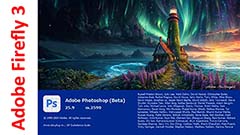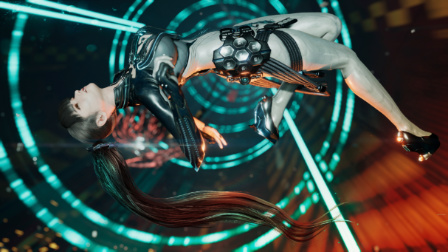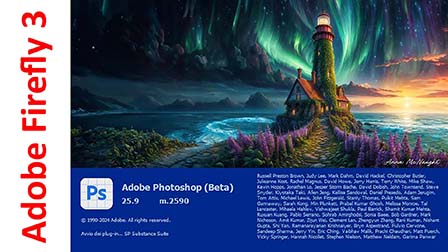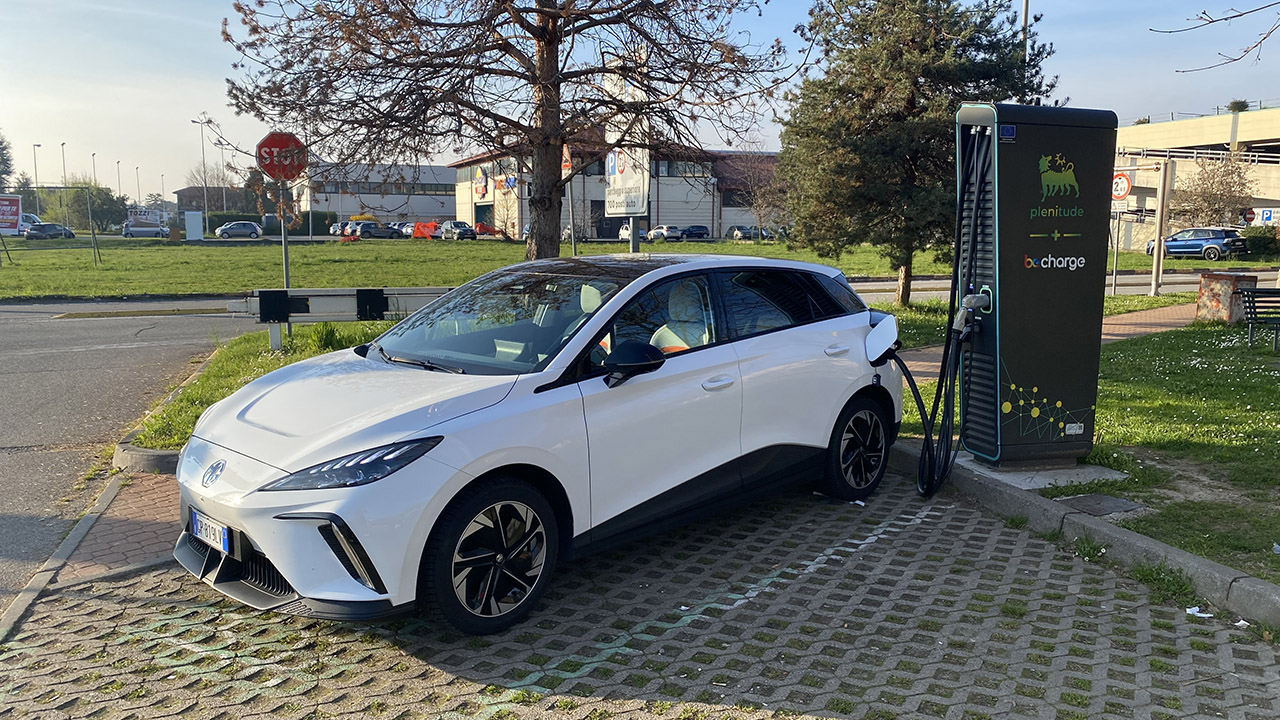|
|||||||
|
|
|
 |
|
|
Strumenti |
|
|
#1 |
|
Senior Member
Iscritto dal: Nov 2001
Città: Padova
Messaggi: 1635
|
[Space] NASA-ESA - Hubble Space Telescope
Cancellata l'ultima missione di servizio per Hubble (SM4):
NASA ha annunciato ieri di aver ufficialmente cancellato l'ultima servicing mission (SM-4) per il telescopio spaziale Hubble (HST) prevista per il 2006 con lo scopo di installare due nuovi strumenti già costruiti e sistemare i giroscopi non funzionanti (4 su 6 ancora funzionano, e 3 sono il minimo per continuare gli esperimenti scientifici) e controllare le batterie che stanno degrandandosi (sono ancora le originali). La motivazione è essenzialmente legata alll'impossibilità di preparare in tempi utili una missione shuttle con la predisposizione per le riparazioni in orbita della navetta in caso di problema simil-Columbia, in assenza si appoggio all'ISS che garantirebbe il soccorso all'equipaggio, e quindi per risparmiare soldi come previsto dal nuovo piano presentato dal presidente Bush. Il destino di Hubble rimane quindi incerto, dato che è difficile pensare che possa arrivare al 2011 in queste condizioni (data in cui dovrebbe entrare in servizio il sostituto, il nuovo James Webb Space Telescope). E' probabile che verrà fatto deorbitare entro il 2007.  NASA Cancels Shuttle Mission to Service Hubble WASHINGTON -- Two days after U.S. President George W. Bush unveiled a new NASA vision requiring a shift in the space agency’s spending priorities, NASA announced that it was curtailing any further space shuttle missions to the Hubble Space Telescope. Launched aboard the space shuttle in 1990, Hubble has been serviced by astronauts four times since then. The last such mission was in 2002. NASA had planned to visit Hubble one last time in 2006 to change out instruments and replace its gyroscopes with the intent of keeping the telescope in service until at least 2011, when its heir apparent, the James Webb Space Telescope, is expected to launch. Scrapping the final servicing mission raises the likelihood that Hubble will fail before Webb is on orbit. NASA officials said the cancellation of the Hubble servicing mission was driven by concerns about astronaut safety -- heightened in the wake of the Columbia disaster -- not budget issues. NASA chief scientist John Grunsfeld said conducting the Hubble servicing mission without violating the safety mandates issued by the Columbia Accident Investigation Board would have required the development of potentially costly inspection and repair techniques not otherwise needed. Because a shuttle visiting the Hubble could not reach the International Space Station if something went wrong, Grunsfeld said NASA would have to have a second shuttle on the launch pad and ready to conduct an orbiter-to-orbiter rescue in an emergency. Grunsfeld said the decision, announced by NASA Administrator Sean O’Keefe on Friday, was driven in part by the need to make tough choices in light of the president’s new vision. "If we had plans to fly the space shuttle for another 15 years, this is an investment that we might have made to develop for all those rescue scenarios," Grunsfeld said. Bush stated that all human spaceflight would be directed to support the effort of putting people on the Moon and Mars. The shuttle, which is the only means by which NASA could service Hubble, is to be devoted to finishing construction of the space station. Astronomers had been concerned since Bush's speech that there "wasn't much wiggle room" to allow for further servicing of Hubble given the new vision, as one astronomer put it. Kevin Marvel, an official with the American Astronomical Society, confirmed that the NASA chief had decided to cancel Hubble Servicing Mission 4 and had held a meeting with NASA employees today to announce that decision. Marvel also said that Steve Beckwith, director of the Space Telescope Science Institute, which operates Hubble, held a meeting with his staff at about 3 p.m. EST (2000 GMT) Friday to tell them of O'Keefe's decision. Marvel said the servicing mission would have prolonged Hubble's life and enhanced its capability with the addition of two instruments. "Our situation as the [American] Astronomical Society is that we're concerned with the decision," Marvel said. "We haven't taken a position at this point but we're actively trying to learn the details." Marvel added: "Without extending Hubble's lifetime the science that's currently being done and planned to be done with the new instruments would obviously not be achievable, and that would be an impact on the astronomy community." Grunsfeld, a left-handed astronaut who earned the nickname "southpaw savante" for the hand he had in the 2002 Hubble servicing mission, said the decision not to return to the telescope was the right choice to make in light of NASA's new mandate. But that does not make it any easier to let go, he said. "I have been described by someone as a Hubble hugger because quite literally I have hugged the Hubble, so this is a hard one," Grunsfeld said. NASA cancels final Hubble telescope servicing mission A final planned shuttle mission to service and upgrade the Hubble Space Telescope, one of the most scientifically productive spacecraft ever launched, has been cancelled, primarily because of post-Columbia safety concerns and a new directive to retire the shuttle by 2010, NASA officials said today. "This is sort of a sad day that we have to announce this," said NASA Chief Scientist John Grunsfeld, an astronaut who helped upgrade Hubble in 2002. "But I have to tell you, as somebody very close to the project, I can tell you they made the right decision. It's one that's in the best interest of NASA." The decision means an advanced camera and light-splitting spectrograph - both already built - will not be installed. It also leaves Hubble's continued operation at the mercy of its aging gyroscopes, batteries and other equipment. Based on the past performance of the gyros and other gear, engineers believe the observatory has a 50-50 chance of remaining in operation until mid 2007, three years shy of when NASA had earlier planned to retire the observatory. Hubble's replacement, the James Webb Space Telescope, will not be launched until around 2011 at the earliest. Foregoing the final servicing mission means the gap between Hubble and Webb will stretch years longer than scientists had hoped. "We're going to try to get as much life as we can out of the Hubble Space Telecope," Grunsfeld said. "We have a commitment from the office of space science that we will continue to support the research and analysis work even beyond (Hubble's demise)." NASA Administrator O'Keefe told engineers and scientists at NASA's Goddard Spaceflight Center that his decision was based on a variety of factors, including a recommendation by the Columbia Accident Investigation Board that would require an autonomous tile repair capability for flights not bound for the international space station. Hubble Servicing Mission 4, or SM-4, was the final flight on NASA's launch manifest that wasn't bound for the space station, where the crew of a crippled shuttle could attempt repairs or await rescue. The CAIB recommendation would have required NASA to develop stand-alone repair techniques for a single flight. Grunsfeld said the cost of that effort, coupled with the Bush administration's recent directive to complete space station assembly and retire the shuttle fleet by 2010, left little choice. "The president laid out for us a plan for space exploration," Grunsfeld said. "As part of that, he directed us to use this precious resource, the space shuttle, with a priority of completing the international space station and then retiring the shuttle. "And so as part of that, when you look at what it would take to support this one single-use unique mission ... in light of retiring the shuttle, kind of pushed the decision over the edge and allowed the administrator to make that decision. As a result, this decision is reflected in the president's budget, which will come out on Feb. 2." Hubble supporters were devastated. "People here are brushing off their resumes," said one official at the Space Telescope Science Institute at Johns Hopkins University in Baltimore. "Hubble has been such a crown jewel for NASA, I would have hoped it would have tilted the balance the other way. ... It's been a sad day. It was like walking around a funeral home." Before the Columbia disaster, NASA had planned to launch a final servicing mission to install the Cosmic Origins Spectrograph and a new, third-generation Wide Field Camera. Spacewalking astronauts also planned to replace stabilizing gyroscopes, aging batteries and other equipment in a bid to keep Hubble healthy until 2010 or so. Only four of the telescope's six gyroscopes are operational and at least three are needed to continue scientific operations. Engineers hope to develop software that will allow the observatory to function with two gyros, but that work is not yet complete. How long Hubble might continue to operate without another servicing mission is anybody's guess. "The answer to how long it can last is completely probabilistic," said a project scientist who asked not to be named. "Who knows what will fail first? The two things we have always been most concerned with are the gyros and the batteries, both of which SM-4 would have addressed." Based on the past performance of the gyroscopes, "it's our guess we have two years to go with 50 percent probability before we're down to two gyros," he said. "But it could be tomorrow and it could be eight years (from now). "We need three gyros to do business as usual. We believe we can develop software to operate with two gyros and do 70 percent of the science the community would like to do. And indeed, headquarters had committed itself to asking Goddard and the institute to develop two-gyro mode several months ago. So clearly, we will do that." That effort probably would keep Hubble operational into the mid 2007 time frame, but there are no guarantees. Batteries are another potential issue. "The batteries are the original batteries, they are way past their experience baseline now," the astronomer said. "They are showing teeny little idiosyncratic signs of aging that no one really knows how to interpret. That's another wild card. And then, of course, you can name other things that could interrupt operations." Up in the air is the fate of the Space Telescope Science Institute and the costly instruments already built for SM-4. "The Cosmic Origins Spectrograph and the Wide Field 3 are almost complete and they are both fantastic instruments. We're really going to scratch our heads and find a good way to get the science out of those," Grunsfeld said. "The various options that we are looking at, nothing definitive, but one possibility is that we find a way to incorporate the opportunity for those instruments to fly in ... our medium-class Explorer missions," he said. "For instance the Origins Spectrograph could be combined with a relatively small mirror -- a one- or a one-and-a-half-meter mirror -- and still do the high-priority science."
__________________
Cosmos Pure | Core i7 860 | P7P55D-E Deluxe | 16GB DDR3 Vengeance | HD5850 | 2x850PRO 256GB | 2xRE3 250GB | 2xSpinPoint F3 1TB Ultima modifica di GioFX : 04-03-2004 alle 14:14. |
|
|

|
|
|
#2 |
|
Senior Member
Iscritto dal: Nov 2001
Città: Padova
Messaggi: 1635
|
Hubble, Its Fate Sealed, 'Has a Place in Everybody's Heart'
It was hard for astronomers to argue with astronaut and astrophysicist John Grunsfeld when he announced that the Hubble Space Telescope would no longer be serviced again, meaning the venerable observatory's days, or at least its years, were numbered. Now chief scientist at NASA, Grunsfeld flew aboard the space shuttle Columbia's March 2002 mission to attach a new camera to Hubble, he took along an important science paper written by Edwin Hubble, for whom the telescope was named. Edwin Hubble discovered in the 1920s that all galaxies are receding from each other -- that the universe is expanding. Grunsfeld presented the decades-old paper to the American Astronomical Society (AAS) at a Seattle meeting in January 2003 and said, according to AAS president Catherine Pilachowski, that "he knew how dangerous the shuttle was but that the astronauts knew how important Hubble is to scientists and to everyone in the world." Edwin Hubble's science paper, having flown to the telescope that bears his name, is now on the wall of the AAS headquarters in Washington, DC. The shuttle, it turned out, was dangerous, as seven of Grunsfeld's colleagues learned less than a month later when Columbia disintegrated upon re-entry. On Friday, Grunsfeld confirmed what many astronomers feared, that Hubble would not be serviced again. The next time it fails, it is done. He cited astronaut safety as the primary reason for the decision. "We all feel it as a devastating blow," Pilachowski said in a telephone interview from her home, just hours after NASA administrator Sean O'Keefe told a group of NASA employees about the decision. Pilachowski represents more than 6,000 members, many of them working professional astronomers. "It was sort of sense of shock and disbelief on everyone's face," she said. For anyone who thought only the public is wowed by Hubble's jaw-dropping images, Pilachowski said, "We astronomers see the pictures and they take our breath away. And we also see the incredible science." She said the decision was surely difficult for NASA officials, too. The AAS president said initial frustration is likely to grow into appreciation for the decision, given the concern for human safety. There is more to the decision, though. Under President George W. Bush's new space plan, the shuttle is to be devoted to finishing the construction of the International Space Station and then the fleet will be retired. That alone seemed to doom Hubble earlier in the week, when Bush announced his vision. Grunsfeld cited the Columbia Accident Investigation Board recommendation requiring a second shuttle be on the launch pad and ready to rescue astronauts doing a Hubble upgrade. None of this can remove all the sting for astronomers losing the greatest astrophotography machine of all time. It is to be replaced in 2011 by a better observatory, the James Webb Space Telescope, but it's doubtful Hubble can last that long without being serviced. "Hubble is a premier facility," Pilachowski said. "Hubble has a special place in everybody's heart." Indeed, the observatory, launched in 1990, is often the only telescope that comes to the lips of the average person -- in a bar, a mall or a school -- asked to name a telescope. Hubble has also done "really outstanding science," Pilachowski said and other astronomers agree. "To think of its premature end is just a hard thing to swallow." Had it been serviced one more time, Hubble might have survived through 2011. Without servicing, it's unknown how long Hubble will last. It is in need of replacement gyroscopes to keep it properly pointed. And the servicing mission, tentatively planned until Friday, would have installed two new instruments to enhance Hubble's capabilities. Astronomers are already contemplating creative ways to keep it online. "It's not as if they're about to turn Hubble off," Pilachowski said. "We're hopeful that Hubble will continue to be productive for several more years." She added that researchers must now "think very hard about how do we get the most out of these last few years of Hubble."
__________________
Cosmos Pure | Core i7 860 | P7P55D-E Deluxe | 16GB DDR3 Vengeance | HD5850 | 2x850PRO 256GB | 2xRE3 250GB | 2xSpinPoint F3 1TB |
|
|

|
|
|
#3 |
|
Senior Member
Iscritto dal: Nov 2000
Città: Sospeso nell'incredibile
Messaggi: 828
|
un vero peccato
|
|
|

|
|
|
#4 |
|
Senior Member
Iscritto dal: Nov 2001
Città: undefined
Messaggi: 6416
|
oh oh!!! se lo buttano via lo prendo io!!
|
|
|

|
|
|
#5 | |
|
Senior Member
Iscritto dal: Mar 2001
Messaggi: 1861
|
cmq
a parte che c'è già in orbita solare un altro telescopio spaziale http://www.spitzer.caltech.edu/ che non durerà molto è vero (la missione prevede 2 anni e mezzo ossia fino al 2006 hubble sarebbe cmq stato rimpiazzato nel 2011 Quote:
|
|
|
|

|
|
|
#6 |
|
Registered User
Iscritto dal: Jul 2003
Messaggi: 2493
|
THE JAMES WEBB SPACE TELESCOPE
JWST will be a large, infrared-optimized space telescope. It will have an 18-segment, 6.5-meter primary mirror. It is being built by Northrop Grumman Space Technology and is scheduled to launch in 2011. http://ngst.gsfc.nasa.gov/ c'e' anche un'immagine del telescopio |
|
|

|
|
|
#7 | ||
|
Senior Member
Iscritto dal: Mar 2001
Messaggi: 1861
|
Quote:
Quote:
|
||
|
|

|
|
|
#8 | |
|
Bannato
Iscritto dal: Apr 2001
Città: Cagliari
Messaggi: 252
|
Re: [Space] NASA - Cancellata l'ultima missione di servizio per Hubble
Quote:
e mi chiedo se non sarebbe meglio accellerare la sua messa in opera piuttosto che continuare a mandare sonde su marte da qui al 2010 a contare i ciottoli marziani che ancora non siano stati contati dalle sonde precedenti |
|
|
|

|
|
|
#9 | |
|
Registered User
Iscritto dal: Jul 2003
Messaggi: 2493
|
Re: Re: [Space] NASA - Cancellata l'ultima missione di servizio per Hubble
Quote:
|
|
|
|

|
|
|
#10 | |
|
Senior Member
Iscritto dal: Mar 2001
Messaggi: 1861
|
Re: Re: [Space] NASA - Cancellata l'ultima missione di servizio per Hubble
Quote:
le missioni su marte sono fondamentali per capire meglio anche la geologia terreste, nuove ipotesi sulla formazione della vita, sulla formazione del sistema solare ecc ecc... Oltre che ovviamente capire come e dove eventualmente iniziare una colonizzazione del pianeta... in un futuro lontano spero non troppo |
|
|
|

|
|
|
#11 |
|
Senior Member
Iscritto dal: Mar 2001
Messaggi: 1861
|
a proposito ragazzi... c'è qualcun altro che ci invia cartoline non solo spirit...
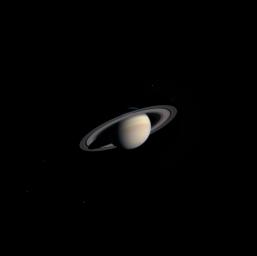 chissarammmai? La sonda cassini of course, che a luglio raggiungerà saturno. La foto è stata presa a circa 111 milioni di km di distanza dal pianeta... Ultima modifica di jumpermax : 17-01-2004 alle 15:41. |
|
|

|
|
|
#12 |
|
Registered User
Iscritto dal: Jul 2003
Messaggi: 2493
|
La Nasa sta iniziando a costruire il James Webb telescope, capace di spingere il suo sguardo fino a 14 miliardi di anni luce: quando il nostro universo stava prendendo forma
Era una splendida mattina di primavera quando, il 24 aprile 1990, lo shuttle Discovery portò nello spazio un occhio di 2,4 metri di diametro: l'Hubble space telescope. Il suo compito: esplorare l'universo più lontano e gli oggetti più misteriosi del cosmo. A distanza di 13 anni è giunto il momento di costruire il successore. Si chiamerà James Webb space telescope, dal nome dell'amministratore della Nasa che guidò l'ente fino al 1968, preparando la strada allo sbarco dell'uomo sulla Luna. Lo specchio per raccogliere la luce sarà due volte e mezzo più grande e composto di berilio (elemento molto riflettente). Una volta in orbita, catturerà le radiazioni emesse da oggetti nati pochi milioni di anni dopo il Big bang e oggi distanti 13-14 miliardi di anni luce. "Il James Webb andrà a occupare un punto dello spazio a 1 milione e mezzo di km dalla Terra, mentre ora lo Hubble è a circa 600 km d'altezza. L'area in cui si collocherà il nuovo telescopio si trova in un particolare equilibrio gravitazionale tra il Sole e il nostro pianeta: per mantenerlo in orbita saranno necessari pochi interventi di controllo della stabilità" anticipa Philip Stahl del Marshall space flight center, dove si provano i prototipi degli specchi. Il James Webb sarà dotato di tre strumenti che dovranno essere perfetti, perché sarà irraggiungibile da qualunque shuttle attuale o di prossima costruzione. Il cuore del telescopio sarà la NirCam (Near-infrared camera): un rilevatore di immagini nell'infrarosso, lunghezza d'onda che serve per vedere gli oggetti più antichi e freddi. Riuscirà anche a captare la luce di eventuali grossi pianeti attorno alle stelle più vicine alla Terra. Il secondo strumento sarà uno spettrometro, capace di stabilire composizione, temperatura e altre caratteristiche fisiche degli oggetti osservati. Il terzo dispositivo osserverà l'infrarosso a una lunghezza leggermente diversa rispetto ai precedenti: una radiazione emessa da galassie e stelle molto antiche. Inoltre potrà osservare gli oggetti che esistono oltre le nubi di polveri cosmiche. Spiega Greg Davidson, codirettore delle ricerche della Ngst, società che costruirà il telescopio: "Dal James Webb gli astrofisici si aspettano risposte su cosmologia e struttura dell'universo, origine ed evoluzione delle galassie, nascita e formazione delle stelle, evoluzione dei sistemi planetari extrasolari". Il telescopio costerà circa 850 milioni di dollari, dei quali 200 verranno forniti dall'Agenzia spaziale europea e 50 da quella canadese. È programmato per funzionare almeno cinque anni, ma si spera di prolungarlo per dieci. Il progetto è ormai in fase operativa e il lancio è previsto per il 2011 a bordo di un razzo europeo Ariane 5. E lo Hubble che fine farà? Fino al disastro del Columbia si pensava di riportarlo a Terra con una missione che sarebbe avvenuta entro il 2010, ma ora l'idea sembra essere accantonata. Nel 2004 sarebbe dovuta partire la quinta missione di servizio, ma è stata spostata oltre il 2005. Proprio in queste settimane una commissione di astronomi ha chiesto alla Nasa di prolungarne la vita fino a quando entrerà in funzione il James Webb. Sul tavolo dell'ente spaziale ci sono tre opzioni. La prima potrebbe dar vita a due missioni di mantenimento del telescopio per farlo durare il più a lungo possibile; la seconda prevede una sola missione e la sua fine verso il 2008; la terza nessuna missione, se lo shuttle non raggiungerà il livello di sicurezza richiesto dopo l'incidente al Columbia. D'altra parte lo Hubble si trova su un'orbita che non permette allo shuttle di raggiungere la stazione orbitante in caso di avaria, e ciò va contro i piani di sicurezza. Comunque vadano le cose, il contributo del telescopio per la comprensione dell'universo è stato immenso. Ha eseguito oltre 300 mila osservazioni e studiato più di 14 mila oggetti, inviando a Terra qualcosa come 3,5 terabyte di dati (tali da riempire 3 miliardi e mezzo di dischetti da computer). Era giusto dunque immaginarlo tra le capsule Apollo e i rover marziani al National air and space museum dello Smithsonian institution di Washington, ma il suo destino potrebbe essere quello di diventare polvere al rientro nell'atmosfera. http://www.panorama.it/scienze/ambie...-A020001020802 -- edit: se ho ben capito questa e' la prima immagine scattata da un prototipo di james webb http://ngst.gsfc.nasa.gov/science/NGC891.html Ultima modifica di ominiverdi : 17-01-2004 alle 16:04. |
|
|

|
|
|
#13 |
|
Senior Member
Iscritto dal: Mar 2001
Messaggi: 1861
|
Appunto dalla descrizione è pari pari allo spitzer anche lui in orbita solare. Cmq la questione hubble sembra essere anche una questione di sicurezza non solo di costi... non so. O è un eccesso di zelo o davvero lo shuttle è messo peggio di quanto non sembri...
|
|
|

|
|
|
#14 | |
|
Senior Member
Iscritto dal: Oct 2000
Città: UK
Messaggi: 7408
|
Quote:
__________________
"Questo forum non è un fottuto cellulare quindi scrivi in italiano, grazie." (by Hire) Le mie foto su Panoramio - Google Earth |
|
|
|

|
|
|
#15 | |
|
Senior Member
Iscritto dal: Nov 2001
Città: undefined
Messaggi: 6416
|
Quote:
boh a me sembra molto 3d enginnered |
|
|
|

|
|
|
#16 | |
|
Senior Member
Iscritto dal: Mar 2001
Messaggi: 1861
|
Quote:
http://photojournal.jpl.nasa.gov/catalog/PIA04913 Io non capisco... tutti pronti a credere ad alieni e facce nascoste sul pianeta marte e di fronte a dati scientifici ed immagini autentiche hop si tratta di un falso... |
|
|
|

|
|
|
#17 |
|
Senior Member
Iscritto dal: Mar 2001
Messaggi: 1861
|
ah e per inciso la missione non è solo americana, c'è anche una parte sviluppata dall'esa che dovrebbe atterrare su Titano.
Una missione credo molto più interessante di quella su marte... la davvero mai tecnologia umana ha poggiato piede... http://saturn.jpl.nasa.gov/spacecraf...ts-huygens.cfm http://www.esa.int/export/esaCP/SEMO...D_index_0.html |
|
|

|
|
|
#18 |
|
Senior Member
Iscritto dal: Sep 2001
Città: de_legato
Messaggi: 792
|
 bellissima!!! ....se fate attenzione si vedono pure i satelliti!!!
__________________
---------------------------------------------- File reality.sys corrupted, Reboot Universe? Y/N ---------------------------------------------- |
|
|

|
|
|
#19 | |
|
Senior Member
Iscritto dal: Mar 2001
Messaggi: 1861
|
Quote:
|
|
|
|

|
|
|
#20 | |
|
Registered User
Iscritto dal: Jul 2003
Messaggi: 2493
|
Quote:
galileo ha fornito immagini davvero interessanti di questi due satelliti, tempo fa lessi che secondo alcuni scienziati vi potrebbero essere le condizioni affinche' si sviluppino forme di vita... molto curioso l'aspetto di IO, non e' troppo "invitante", sembra un formaggio ammuffito con una specie di pus sopra http://photojournal.jpl.nasa.gov/catalog/PIA02527 http://galileo.jpl.nasa.gov/images/io/ioimages.html http://galileo.jpl.nasa.gov/moons/io.html http://galileo.jpl.nasa.gov/moons/europa.html |
|
|
|

|

|
| Strumenti | |
|
|
Tutti gli orari sono GMT +1. Ora sono le: 21:00.










